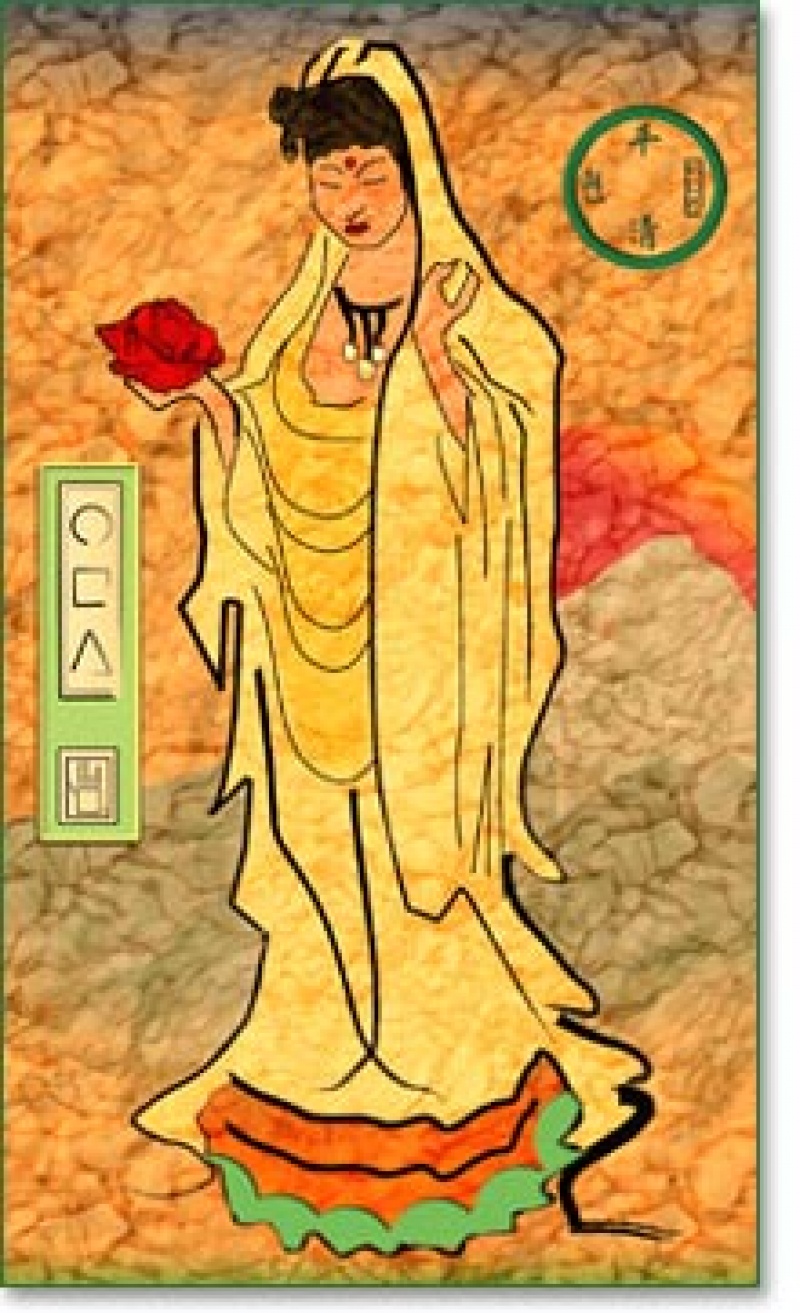On The Way: The Daily Zen Journal
The Practice of Compassion
Ji Aoi Isshi
Some mistakenly think that zen soars high above any need for compassion. Don’t be one of them. Since I have compassion for you, I’ll try to set you straight on this point right now! Open your minds:
Universally in Buddhism, and Zen as well, we find the ideal of Compassion firmly entrenched. Compassion is personified in Buddhism by the bodhisattva Kannon, who is the “Hearer of Cries” of all the suffering in the world.
When we too decide to listen and become receptive to the ubiquitous suffering, we become another ear of the Hearer. When we are further moved to compassion via this receptivity, we then become as an arm of the bodhisattva, ready to turn compassion into action, utter the compassionate word, or simply send our loving kindness radiating toward all beings.
Compassion provides us with a concrete way to make the world a better place, and this alone is entirely worth its development. Everyone recognizes the innate value of kindness. This is not news.
After death, a compassionate person is lauded: “Her kindness touched all who met her” “His compassion healed many wounds.” Very seldom do we read on a tombstone how clever someone was, or how rich or successful! Kindness, however, seems to touch a universal chord in us all. It’s hard to imagine a world devoid of the simple, powerful trait of compassion.
In Zen, wisdom (prajna) is often made out to be king. But if that is true, then it is compassion that is the sole queen of zen, and no less important at all. Perhaps that is why Avalokiteshvara morphed from male to female over the course of centuries, in order to express this steady, unwavering compassion akin to a mother’s love for her child. Strength and wisdom are completed by the addition of compassion and are not necessarily positive traits by themselves.
The pure act of compassion provides us with a powerful, twofold means of practice. It is both a means of turning emptiness into form by giving (dana) toward all sentient beings while realizing at the same time the Buddhist principle  that there is no set rigid identity; and it is also a means of turning form into emptiness by overcoming the “form” of the ego (ours!), when we ourselves forget that very same principle (anatta)!
that there is no set rigid identity; and it is also a means of turning form into emptiness by overcoming the “form” of the ego (ours!), when we ourselves forget that very same principle (anatta)!
When we suffer due to our own deluded view of “self” it does no good at all to tell us that there is really no one there to suffer. I hurt, therefore I am! Conversely, when we are able to turn form into emptiness by leaping over ourselves and our petty sense of “me and mine,” then we are truly practicing a tangible form of zen compassion.
Jumping over ourselves, we save all sentient beings; jumping over our pride, we save all sentient beings; jumping over our own difficult situations, we save all sentient beings! Only to the extent that we’re able to jump over our limited sense of self for the sake of others do we gain in the tangible power of the Way; the power of virtue.
To whatever extent that we discover this innate, universal compassion, our own troubles proportionately shrink. And to the extent that we share in this power, shrinking our estimation of our own troubles, we can remain serene in the face of life’s inevitable hardships. And of course, becoming compassionate, powerful and serene we then have more to give to others.
We become benefactors whose fortune is in the currency of kindness. Thus, the cycle of compassion turns and becomes exceedingly deep and strong. And so incidentally, without greed for our own growth, our practice becomes just as deep and strong!
So, within the Bodhisattva ideal of compassion lies a two fold path for deepening our practice while helping others bear the unavoidable burdens of life on this plane. Thus the world becomes a concretely better place, by just that much more compassion.
In a world where might becomes justification, this balm of kindness is more necessary than ever before. Then, over and over, day in and day out, the continuity of this powerful practice of compassion unfolds, drawing us deeper into actually seeing the essential emptiness of our own ego while leading others still clinging to that illusory view to a new-found place of buoyancy and strength. Exponentially, candles light other candles, endlessly supplying light and care to all.
I vow to save all sentient beings, even though there are no separate individualities!
Make sense? No, not really… except through the heart of compassion — then it does! There we surpass the definition and discover Being in the bargain. The value of compassion in today’s world is obvious; and the value of the practice of compassion is a two way street of depth without which zen practice might become merely a selfish charade.
May all beings be happy and may they then share that happiness with others via the twofold action of compassion!
Ji Aoi Isshi
Excerpted from unpublished manuscript




In the beginning of practice we are fixated on our own progress and understanding. As we train further our ability to help others grows, whether in clarifying a technique or in sensing when a few kind words are needed. To continue in practice involves moving beyond our own personal practice to an awareness of the needs of others as well. The dissolution of the separation between self and others is more than an intellectual construct; our actions demonstrate how deeply Understanding has penetrated. Actions always speak louder than words, discussions, and concepts.
Compassion is a powerful doorway into a life of practice. How many of us will choose a life of compassion in action? Each moment we stand at a crossroads; every action reveals our heart.
Enjoy a compassionate Equinox,
Elana, Scribe for Daily Zen